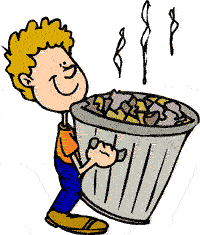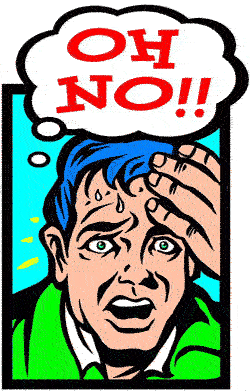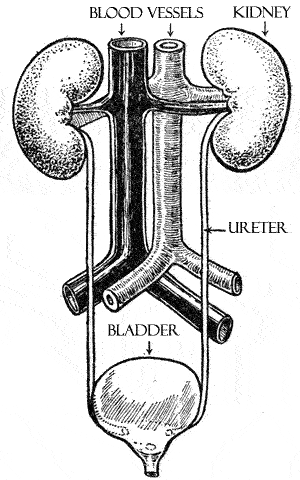Week 11 - Healthy Human Body Systems
4. The Excretory System
Lesson 12
Science in Action 8
Pages 135-140
ScienceFocus 8
Pages 146-147
Lesson 12: The Excretory System
How Your Body Takes Out the Trash
| Waste products are created in all living organisms. They might come from cell metabolism or the removal of dead cell materials. In people, the blood stream picks up wastes from cells, but where does it go from there? In this lesson we will briefly examine how the body gets rid of waste products. |
 |
 |
Your skin's main purpose is to protect your internal systems against invading organisms like bacteria and help regulate body temperature by sweating when you are too hot and shivering when you are too cold. But waste salts and heat are also removed from the body through the skin in the form of perspiration (sweat). |
Your bodys cells produce ammonia as a waste product which is released into your blood plasma (the liquid part of your blood). Your circulation system then carries the ammonia to the liver. The liver is considered to be part of the digestion system as it makes the bile that is used to break down fats. But it also converts ammonia, which is very poisonous, into the less poisonous chemical called urea . This urea continues its journey in the blood stream until it reaches the kidneys.
Your kidneys are the main organs of your excretory system. Through a complex process, they remove excess water, urea and salts to produce urine . The urine leaves the kidneys and flow down through two ureters into the bladder where it is stored until you go to the bathroom.
|
Examine the diagram on the right.
On your test you must be able to identify the all the major parts. |
 |
© 2002 Alberta Online Consortium